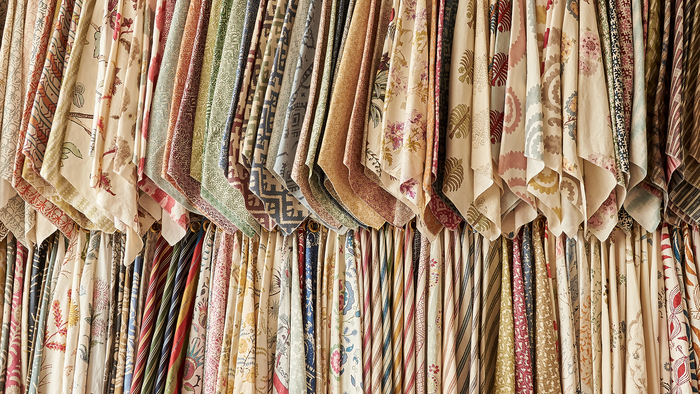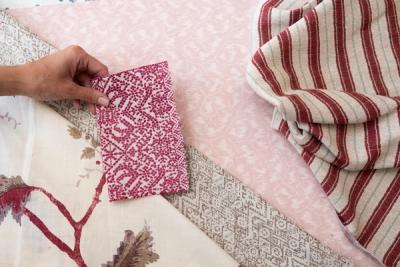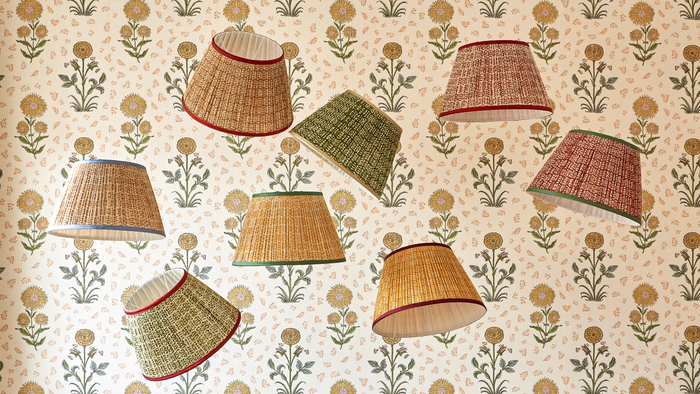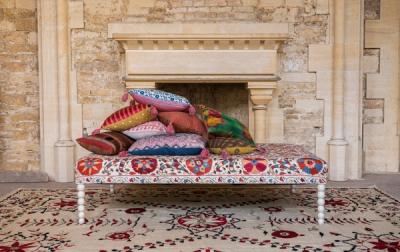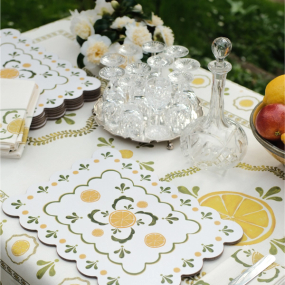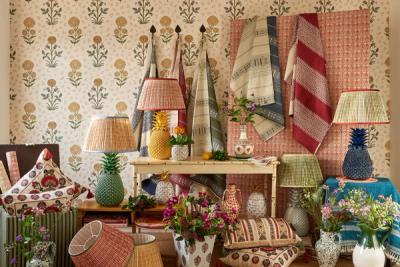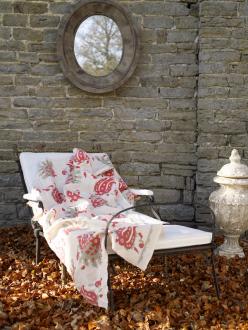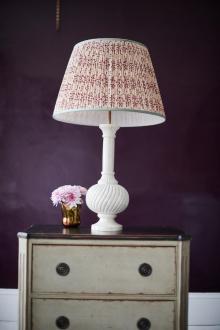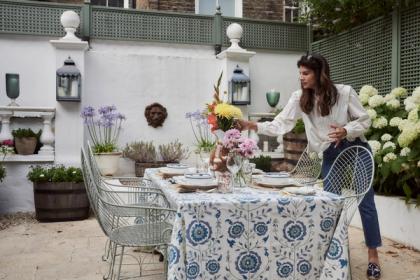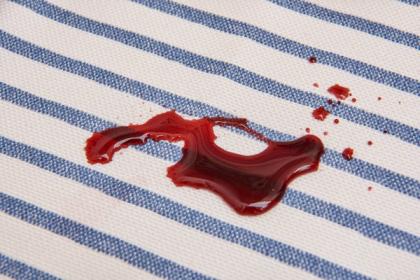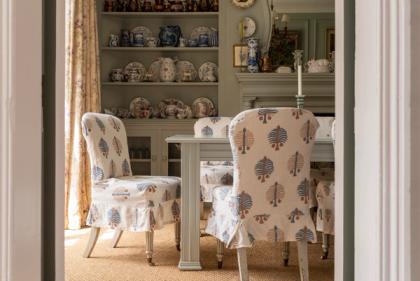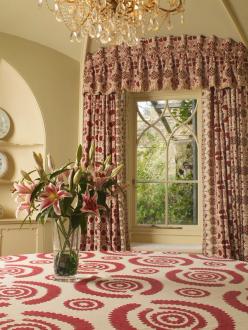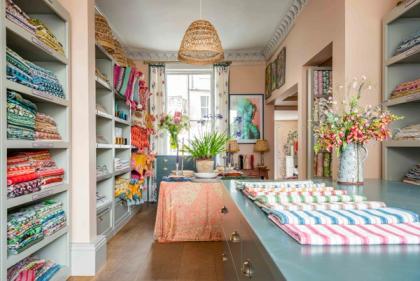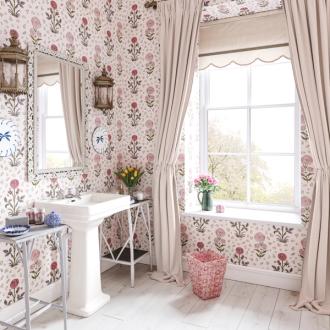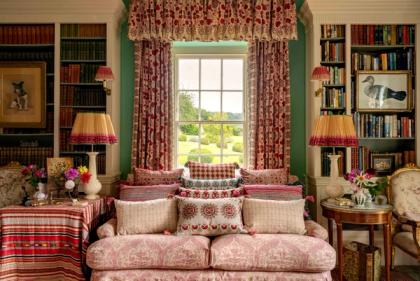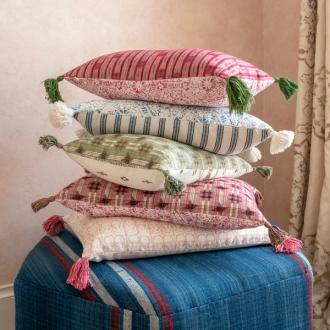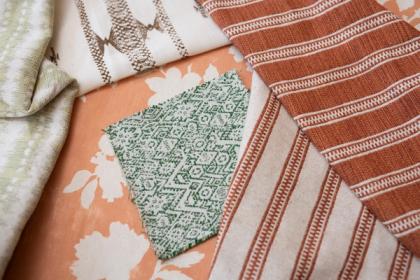The Penny Morrison Guide to Performance Fabric


For the most part, naturally strong fibres like cotton and linen – when woven tightly together – are strong enough to withstand the daily wear and tear of home life. Even in high traffic areas – the playroom, family room, and kitchen – our range of fabrics has proven to be one of the most reliable (and eco-friendly) of options.
In some areas of the home and garden, however, a little extra is needed. Stain and water resistance, ease of care and maintenance, colour fastness, and resilience are all put under the microscope, and if our pieces are going to continue looking good beyond the first six weeks of summer, our demands need to be very high.
When we are approached about these types of projects, performance fabrics will inevitably be the first (and only) port of call for us.
What is a Performance Fabric?
Broadly, the term applies to any fabric that is easy to look after, and capable of withstanding heavier use. Consider the sorts of fabric that would be suitable for use in an outdoor seating area, where, with the best will in the world, rain and mud will inevitably reach your soft furnishings from time to time.
There are many different types of performance fabric out there, and some are certainly better than others. These days, strong and hard-wearing fabrics needn’t feel particularly strong or hardwearing, which no doubt comes as great news to anyone who spent the summer holidays sitting on their grandmother’s plastic-coated sofa, or sticking to the uncomfortable, sweaty plastic deck chair cushions out in the garden.
But, despite the substantial variety of fabric types out there, they tend to be united by the following characteristics:
Stain resistance
Particularly useful in the playroom, where the rate of annual drink spills and food drops is significantly higher than it is in the rest of the home. Also, in the garden, where mud, soot from the firepit or barbeque, melted ice cream and dust tend to find their way onto the furniture.
Also, consider liminal spaces in the home. The mudroom, hallway, and any soft furnishings in the master bathroom are all a little more vulnerable to stains and watermarks. Speaking of which…
Water resistance
It’s never a brilliant idea to leave the garden furniture out in a rainstorm, but the British weather has a way of turning on even the most enjoyable of garden sessions during those first few weeks (or, perhaps, months) of summer, so water resistance is obviously a key factor here.
Mildew resistance
Where there’s moisture and humidity (perhaps where garden furniture is stored in the off-season, and where there are washing machines and tumble dryers whirring) there is bound to be the risk of mildew, and many a cushion has been ruined by the onset of mildew.
While most parts of the house are quite safe from the risk of mildew, performance fabrics offer a much more promising alternative where organic materials, like linen and cotton, are on the line.
Lightfastness
When a fabric is described as lightfast, it means that the dyes used to create it are capable of being exposed to bright lights. Some fabrics will, inevitably, begin to lose their vividity through continued exposure to sunlight – the reason many chairs are routinely given a few months away from the window, and why some people prefer to draw the blinds during the brightest part of the day. These days, that’s often not necessary (and is, perhaps, going the way of the plastic-wrapped sofa), but some fabrics are much more susceptible to light than others.
Most of us would prefer not to see our lawn furniture fading from a bold red to an insipid, a stunning yellow to a watery tea-stain colour, and that’s why lightfastness is key.
Machine washability
So important. Think of the things traipsed into the mudroom – not just by your day-to-day comings and goings, but by the dogs and the cats, the muddy welly boots, the riding gear, the gardening gloves and fistfuls of damp conkers left unthinkingly on the bench while the perpetrator takes off their shoes. Then there’s the football or rugby boots, the dripping rain coats, the blackberry-stained fingers, the wet shopping bags, the grass stains and goosegrass and drinks spilled as they cross from the house to the garden. And that’s just the mudroom.
From the playroom to the garden, where you place your performance fabrics will almost always correlate with the areas of the home most in need of a regular clean. As you can imagine, it makes life significantly easier to be able to toss these fabrics straight into the machine.
Obviously, you’ll want to talk to your upholsterer about making easy-to-remove slipcovers and pillowcases for your furniture. You will thank yourself later, when giving the furniture set a spring clean takes mere moments.
A high Martindale rub count
The Martindale rub test is a vital step in quality assurance and tells you virtually everything you need to know about your fabric’s ability to last through years and years of wear and tear.
The Martindale rub test subjects the fabric in question to thousands and thousands of ‘rubs’ from a special machine, which generally uses a gently abrasive substance like wool or wire mesh. The machine will rub the fabric in spurts of 5,000 and, at the first sign of wear, the test is stopped and the ‘rub count’ – or, in other words, how many rubs the fabric withstood before showing signs of damage – is recorded.
It’s a clever way of condensing hundreds of separate uses into a single test (meaning it doesn’t take decades to determine the fabric’s rub count.
Generally, any fabric that scores below 10,000 will be considered far too fragile for anything but decorative use, while fabrics with a rub count between 10,000 and 20,000 will be a little more useable (though still not robust enough for upholstery). 20,000+ is fine for furniture throughout the home, although it’s worth considering how much use the piece will see, and whether you ought to go for a higher rub count.
Our SEAQUAL performance fabrics have a Martindale rub count of amore than 40,000, making them an incredibly durable, heavy-duty option for those areas of the home that may get heavier traffic.
Performance Fabrics and the Environment
At Penny Morrison, a big part of who we are stems from our concern for the environment, and our passion for prioritising sustainability and eco-friendliness over quick, cheap manufacturing. Our decision to use SEAQUAL yarn in our performance fabrics is, of course, a part of that philosophy.
SEAQUAL is an initiative that repurposes plastic waste found in our oceans. While supporting communities and clean-up groups across the planet, SEAQUAL recycles marine plastic into a strong and robust material used for textile manufacturing.
At Penny Morrison, we’ve been on a journey to find a durable base cloth that can support the growing demand for beautiful yet practical indoor/outdoor performance fabrics, whilst minimising our impact on the planet. We wanted to avoid first-generation synthetic yarns, and SEAQUAL goes one step further by simultaneously supporting the clean-up of oceans and beaches, and recycling this marine plastic into a product that can be used for home fabrics. We have a long way to go on our sustainability journey, but we hope that by promoting the use of recycled materials for home fabrics within our industry, we can build awareness, and others might follow in our footsteps.
